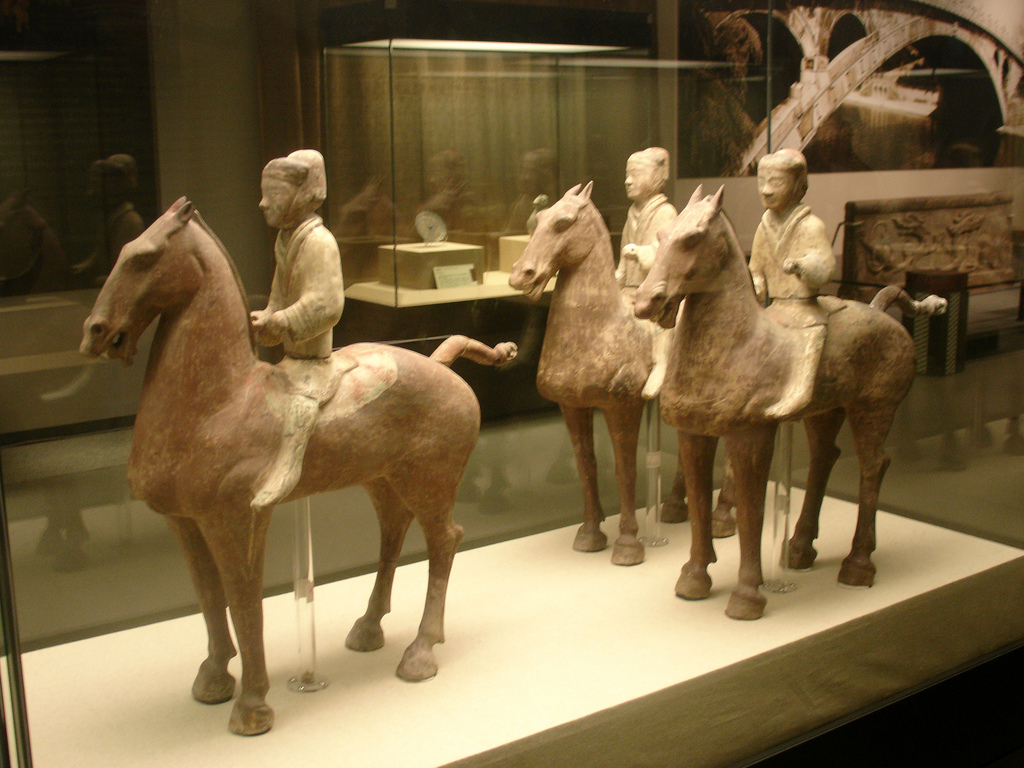One thing that ancient historians cannot do often enough is emphasizing that, right at the moment when Rome was reaching its greatest hegemony over the Mediterranean and Europe, there was an empire right on the other side of the world that was at least as large, and at least as populous as the Roman Empire, and had an equally complex political and cultural system.
Rome and China
We do not need to choose which of the two empires was greater – Rome and Han China never were direct rivals; they very clearly were in the same league when it comes to imperial size and complexity, and were both unprecedented in their own region. They both lasted an unprecedentedly long time, and left a lasting mark on the future development and historical perception of their regions in the millennia to come. And, yes, they were both on each other’s mental horizon – if only just.

For the Romans, China was the mythical land of silk, where people lived for more than 130 years. For the Chinese, Rome was the Great China of the Far West, where they consumed large quantities of silk – I leave it to the reader to decide which of the two accounts seems more accurate.
China to Rome
By the late first century CE, the Han Empire had survived its dynastic crisis and was asserting control over large areas to the west of its original Chinese heartland, particularly along the overland route towards the Far West – the Silk Road – which had emerged in the last centuries BCE.
As part of this policy, the general leading the effort in the West – Ban Chao – in 97 CE decided that it was time that someone close to the Han court saw the Romans with his own eyes, and sent Gan Ying to the Far West. The details of the trip – which supposedly was the first of its kind – have been recorded in the Hou Hanshou (‘Book of the Later Han’), a history of China covering the first two centuries of our era, compiled in the fifth century CE.
Gan Ying, unfortunately, never made it to Rome: he arrived in Mesopotamia, and may even have reached the shores of the Mediterranean, but the Hou Hanshou states that he was then dissuaded from the ‘dangerous’ crossing of the sea by the ‘sailors of the western frontier’ of the Parthian Empire – they basically told him that it could take him anything between three months and two years, and that he might as well die in the process. Gan Ying then backed off and returned to China.
The Roman Empire according to the Chinese
Still, this first known traveller from China to the Far West is thought to have acquired quite a bit of information about the Roman Empire. The Hou Hanshou mentions that the Empire had four hundred cities, which were surrounded by stone town walls. It also comments on Rome’s coinage system, which used gold and silver, and on its trade with Parthia and India, and asserts that the Romans had wanted to send embassies to China, but were blocked by the Parthian Empire, which did not want to give up its privileged trading position.
Not all information is accurate – Gan Ying apparently was told that Roman ‘kings’ were not permanent, and would happily accept any demotion – which cannot possibly have been further from the truth. Nevertheless, the Hou Hanshou offers a valuable insight into Chinese perspectives on the Roman Empire. It also is significantly more detailed than any report on China from the Roman side – For ancient historians, one remarkable (and unusually humbling) aspect in the study of contact between China and Rome is that the sources actually mostly come from the other side of the disciplinary rift.
Miko Flohr, 03/03/2020
